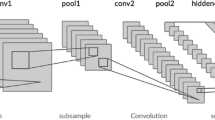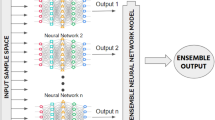Abstract
Over 500 million people have fallen prey to the coronavirus (COVID-19) epidemic that is sweeping the world. The traditional method for detecting it is pathogenic laboratory testing, but it has a high risk of false negatives, forcing the development of additional diagnostic approaches to combat the disease. X-ray imaging is a straightforward and patient-friendly operation that may be performed in almost any healthcare facility. The aim of the report is to use transfer learning models to build a feasible mechanism for determining COVID-19 pneumonia automatically utilizing chest X-ray images while enhancing detection accuracy. On three publicly available datasets, we ran several experiments. The recommended mechanism is intended to provide multi-class classification diagnostics (COVID-19 pneumonia vs. Non COVID-19 pneumonia vs. Normal). In this study, 5 selected best transfer learning methods out of 9 alternative models were tested in various scenarios with varied dataset splitting and amalgamation. Based on their performance with the Merged dataset, an ensemble model was developed using top three models. Our proposed ensemble model had classification accuracy, precision, recall, and f1-score of 99.62%, 1, 0.99, and 1.00 for multi-class cases, respectively. It detected 99.12% of COVID-19 pneumonia accurately. This recommended system can considerably improve COVID-19 diagnosis time and efficiency.
Access this chapter
Tax calculation will be finalised at checkout
Purchases are for personal use only
Similar content being viewed by others
References
Biology, P.: What is pneumonia? https://www.bumc.bu.edu/pneumonia/ background/what/. Accessed 18 Apr 2022
Pham, T.D.: Classification of Covid-19 chest X-rays with deep learning: new models or fine tuning? Health Inf. Sci. Syst. 9(1) (2021)
Seladi-Schulman, J.: Coronavirus and pneumonia: Covid-19 pneumonia symptoms, treatment (2020). https://www.healthline.com/health/coronavirus-pneumonia. Accessed 18 Apr 2022
WebMD: Pneumonia and coronavirus. https://www.webmd.com/lung/covid-and-pneumonia1. Accessed 18 Apr 2022
AL Association: Learn about pneumonia. https://www.lung.org/lung-health-diseases/lung-disease-lookup/pneumonia/learn-about-pneumonia. Accessed 26 July 2022
Mayo: Pneumonia symptoms and causes. https://www.mayoclinic.org/diseases-conditions/pneumonia/symptoms-causes/syc-20354204. Accessed 18 Apr 2022
Stephen, O., Sain, M., Maduh, U.J., Jeong, D.U.: An efficient deep learning approach to pneumonia classification in healthcare. J. Healthcare Eng. 2019 (2019)
Cheng, Z., et al.: Clinical features and chest CT manifestations of coronavirus disease 2019 (Covid-19) in a single-center study in Shanghai, China. Am. J. Roentgenol. 215(1), 121–126 (2020)
Liu, C., Wang, X., Liu, C., Sun, Q., Peng, W.: Differentiating novel coronavirus pneumonia from general pneumonia based on machine learning. Biomed. Eng. Online 19(1), 1–14 (2020)
Ibrahim, A.U., Ozsoz, M., Serte, S., Al-Turjman, F., Yakoi, P.S.: Pneumonia classification using deep learning from chest X-ray images during Covid-19. Cogn. Comput. 1–13 (2021)
Sethy, P.K., Behera, S.K.: Detection of coronavirus disease (Covid-19) based on deep features (2020)
Khan, A.I., Shah, J.L., Bhat, M.M.: Coronet: a deep neural network for detection and diagnosis of Covid-19 from chest X-ray images. Comput. Methods Programs Biomed. 196, 105581 (2020)
Narin, A., Kaya, C., Pamuk, Z.: Automatic detection of coronavirus disease (Covid-19) using X-ray images and deep convolutional neural networks. Pattern Anal. Appl. 24(3), 1207–1220 (2021)
Nishio, M., Noguchi, S., Matsuo, H., Murakami, T.: Automatic classification between Covid-19 pneumonia, non-Covid-19 pneumonia, and the healthy on chest X-ray image: combination of data augmentation methods. Sci. Rep. 10(1), 1–6 (2020)
Ozturk, T., Talo, M., Yildirim, E.A., Baloglu, U.B., Yildirim, O., Acharya, U.R.: Automated detection of Covid-19 cases using deep neural networks with X-ray images. Comput. Biol. Med. 121, 103792 (2020)
Tang, S., et al.: EDL-Covid: ensemble deep learning for Covid-19 case detection from chest X-ray images. IEEE Trans. Ind. Inf. 17(9), 6539–6549 (2021)
Öksüz, C., Urhan, O., Güllü, M.K.: Ensemble-CVDNet: a deep learning based end-to-end classification framework for Covid-19 detection using ensembles of networks. arXiv preprint arXiv:2012.09132 (2020)
Bhardwaj, P., Kaur, A.: A novel and efficient deep learning approach for Covid-19 detection using X-ray imaging modality. Int. J. Imaging Syst. Technol. 31(4), 1775–1791 (2021)
Afifi, A., Hafsa, N.E., Ali, M.A., Alhumam, A., Alsalman, S.: An ensemble of global and local-attention based convolutional neural networks for Covid-19 diagnosis on chest X-ray images. Symmetry 13(1), 113 (2021)
Chowdhury, M.E., et al.: Can AI help in screening viral and Covid-19 pneumonia? IEEE Access 8, 132665–132676 (2020)
Rahman, T., et al.: Exploring the effect of image enhancement techniques on Covid-19 detection using chest X-ray images. Comput. Biol. Med. 132, 104319 (2021)
Chen, Z.H.: Mask-RCNN detection of Covid-19 pneumonia symptoms by employing stacked autoencoders in deep unsupervised learning on low-dose high resolution CT (2020). https://doi.org/10.21227/4kcm-m312
Alqudah, A.M.: Augmented Covid-19 X-ray images dataset (2020)
Pan, S.J., Yang, Q.: A survey on transfer learning. IEEE Trans. Knowl. Data Eng. 22(10), 1345–1359 (2009)
Weiss, K., Khoshgoftaar, T.M., Wang, D.D.: A survey of transfer learning. J. Big Data 3(1), 1–40 (2016). https://doi.org/10.1186/s40537-016-0043-6
Szegedy, C., Vanhoucke, V., Ioffe, S., Shlens, J., Wojna, Z.: Rethinking the inception architecture for computer vision. In: Proceedings of the IEEE Conference on Computer Vision and Pattern Recognition, pp. 2818–2826 (2016)
Fei-Fei, L., Deng, J., Li, K.: ImageNet: constructing a large-scale image database. J. Vis. 9(8), 1037 (2009)
Simonyan, K., Zisserman, A.: Very deep convolutional networks for large-scale image recognition. arXiv preprint arXiv:1409.1556 (2014)
Wu, Z., Shen, C., Van Den Hengel, A.: Wider or deeper: revisiting the ResNet model for visual recognition. Pattern Recogn. 90, 119–133 (2019)
He, K., Zhang, X., Ren, S., Sun, J.: Deep residual learning for image recognition. In: Proceedings of the IEEE Conference on Computer Vision and Pattern Recognition, pp. 770–778 (2016)
Howard, A.G., et al.: MobileNets: efficient convolutional neural networks for mobile vision applications. arXiv preprint arXiv:1704.04861 (2017)
Huang, G., Liu, Z., Van Der Maaten, L., Weinberger, K.Q.: Densely connected convolutional networks. In: Proceedings of the IEEE Conference on Computer Vision and Pattern Recognition, pp. 4700–4708 (2017)
Dong, X., Yu, Z., Cao, W., Shi, Y., Ma, Q.: A survey on ensemble learning. Front. Comput. Sci. 14(2), 241–258 (2020)
Author information
Authors and Affiliations
Corresponding author
Editor information
Editors and Affiliations
Rights and permissions
Copyright information
© 2023 ICST Institute for Computer Sciences, Social Informatics and Telecommunications Engineering
About this paper
Cite this paper
Seema, S.J., Ahmed, M.U. (2023). A Reliable and Efficient Transfer Learning Approach for Identifying COVID-19 Pneumonia from Chest X-ray. In: Satu, M.S., Moni, M.A., Kaiser, M.S., Arefin, M.S. (eds) Machine Intelligence and Emerging Technologies. MIET 2022. Lecture Notes of the Institute for Computer Sciences, Social Informatics and Telecommunications Engineering, vol 490. Springer, Cham. https://doi.org/10.1007/978-3-031-34619-4_11
Download citation
DOI: https://doi.org/10.1007/978-3-031-34619-4_11
Published:
Publisher Name: Springer, Cham
Print ISBN: 978-3-031-34618-7
Online ISBN: 978-3-031-34619-4
eBook Packages: Computer ScienceComputer Science (R0)




